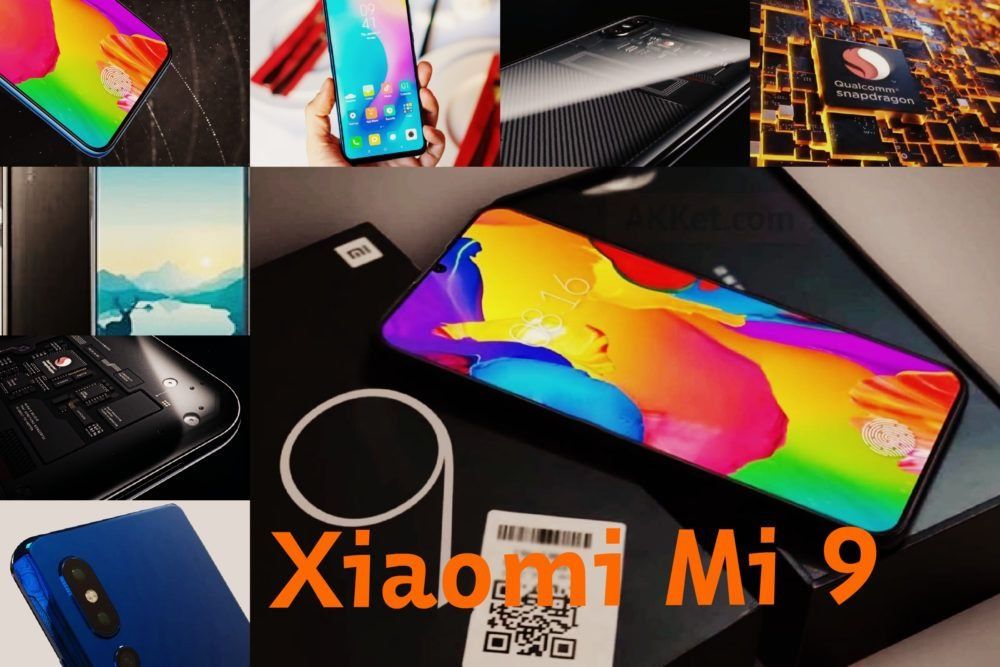Ranking of the best headphone amplifiers in 2024

Almost all gadgets - phones, tablets, players, laptops have headphone outputs, they work and provide sound. However, it is interesting that with different amplifiers at the output, a completely different sound is obtained at the same volume on the same headphones. So what's the trick? A separate amplifier enhances detail, changes the atmosphere of the sound, ensures maximum match with the source, and minimizes distortion.

Why do you need a sound amplifier for headphones
Replacing headphones may not always meet expectations in terms of sound quality, and connecting an amplifying device invariably guarantees a decent result.
The amplifier receives the audio signal from the source and amplifies its current and voltage to the required level of the headphones for high quality reproduction.
Hi-Res-Audio
Modern smartphones are capable of supporting such a standard, and Hi-Res is moving out of a narrow segment niche into a big life.

The sound quality has a higher frequency than CD. The Hi-Res format is characterized by a sampling rate of 96 to 192 kHz, with a sampling rate of 24 bits. For CD sound the parameters are 16 bit and 44.1 kHz.
The sampling rate is the number of times a signal is sampled per second in order to convert it to “digital” from an analog state.
- high level of sound quality;
- availability of sites for downloading in compression formats at low bitrate.
- large file size, which makes it difficult to transfer over Wi-Fi, mobile network;
- compatibility limitations of Hi-Res-audio formats.
DAC
The D / A converter is part of the source-DAC-headphone circuit to increase sound quality. In headphones and speakers, sound reproduction is carried out using an analog signal. Audio discs and hard drives store files in digital format.

From which it follows that in order to obtain sound in the headphones, digital-to-analog conversion must occur. The built-in DAC chip is an integral part of amplifiers.
Balanced output
A balanced audio connection uses a balanced line connection type. The area of use was originally at concert venues, at recording studios, since it gives the advantage of connecting through long cables that do not allow external interference.
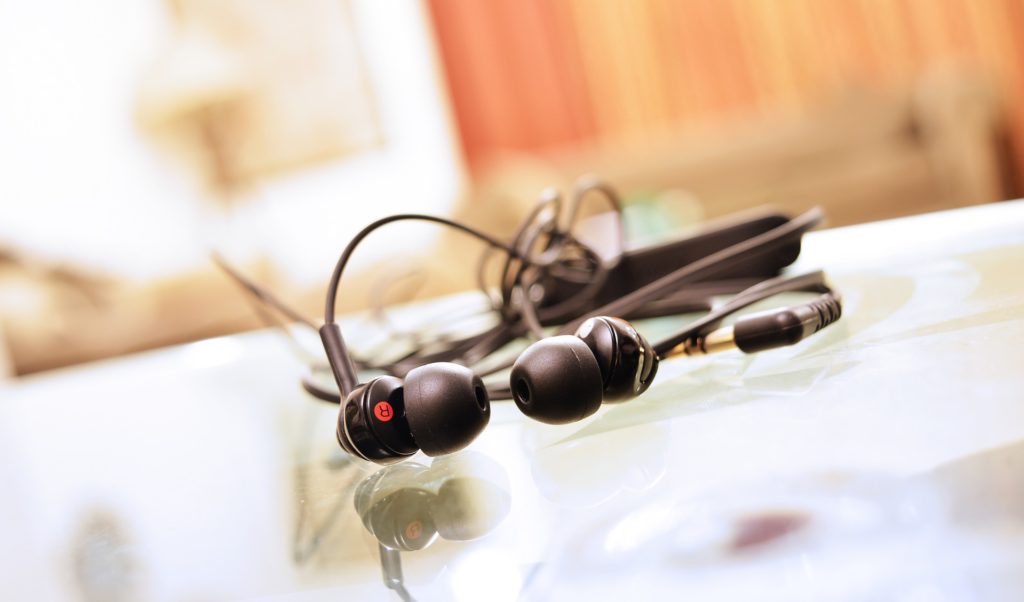
A balanced connection uses a phase-anti-phase-ground scheme, which allows you to “subtract” interference while maintaining the signal.
Amplifier selection criteria
The size
The dimensions of the device indicate its power, which depends on the output voltage, maximum output power and resistance.
Full-size headphones can hardly be adequately pumped by a small-sized amplifier. The ratio of the sensitivity of the headphones to the final volume level determines their output:
- from 1 to 2 V;
- 5 B.

The internal impedance of the headphones must correspond to the parameters of the amplifier, otherwise the output stage will overload and the distortions, both nonlinear and linear, will increase.
Amplifier classes
In total, three classes of amplifying devices are distinguished:
- AND;
- IN;
- AB.
"A" - amplifiers of the best quality and value, without distortion and maximum linearity. The negative side of the class is overheating and low efficiency. In the final stage, the quiescent current is several amperes.
"B" - devices operate at half-cycle, half of the wave is "extinguished", but the efficiency is more than 50%.
"AB" is an intermediate class between the two above, a characteristic feature is the reduction of distortion by displacement at the beginning of the signal. The maximum quiescent current value is up to 150 mA.
A type

The entire numerous range of headphone amplifying devices is divided into 2 types:
- stationary;
- portable - to improve the quality of playback through the phone, without purchasing an independent device - a player.
How to choose the right one
Almost all models have semiconductor circuitry, but there are also tube devices.
The main task is to combine the existing headphones with the purchased amplifier, or set the task of simultaneously purchasing both devices. Headphones can be high-ohm - from 100 ohms, and low-ohm, not every power is within the power of a "weak" model. The good sensitivity of high impedance headphones does not directly affect the volume level.
The cost
Manufacturers occupy certain price niches, the following price groups can be distinguished:
- up to 10,000 rubles;
- up to 15,000 rubles;
- several tens of thousands of rubles.
 It is difficult to decide which company is the best device, the price ranges for both portable and stationary devices vary greatly.
It is difficult to decide which company is the best device, the price ranges for both portable and stationary devices vary greatly.
Functional
Amplifiers with a built-in DAC have advanced functionality, this applies to:
- various sound sources;
- combination with other devices;
- the ability to adjust the level of "bass" for metal lovers and fans of heavy rock;
- the presence of multiple inputs and outputs.
Playback quality

The sound is rated according to the following main parameters:
- detailing;
- depth and width of the stage;
- low, medium and high frequencies;
- noise level;
- purity;
- the degree of approach to the source.
Design and build quality
Famous brands try to adhere to a certain line of style and design. The desire for lightness and mobility of models remains in demand, bulky systems have sunk into oblivion.

For stationary devices, the priority is strength and reliability, for portable devices, size and thickness come first with the possibility of a "sandwich" configuration.
Volume
When comparing several amplifying devices in terms of loudness, they use voltage parameters that are measured by dBV, it is the difference in voltage numbers that indicates the loudness delta in dB.
Selection errors
The main erroneous calculations are:
- incorrectly selected power of devices;
- their mutual discrepancy;
- lack of necessary inputs, outputs and cords, connections in the package;
- insufficient functionality;
- weak battery:
- sound quality.

The best audio amplifiers for headphones
Portable models
FiiO
The company entered the global market in 2007 and won the trust of buyers, first of all, with a product from the headphone amplifier series. The ideal price-quality ratio was decisive in taking the leading positions. The company regularly releases new products and is distinguished by the rapid growth of customer demand segments. The innovative ideas of the developers are based on the gained production experience. The priority areas are quality, ergonomics, creativity, practicality. One of the brand's most recent breakthroughs has been a fourfold increase in production capacity.The company has also strengthened its quality control and finished product testing sector.
FiiO Q1 Mark II

A stereo amplifier from China with a power of 0.112 W, with a built-in battery, belongs to high-definition gadgets.

| FiiO Q1 Mark II | |
|---|---|
| Channels, number | 2 |
| Front channel. Power, W | 0,112/0,075 |
| Playback frequency 3.5 output. Range, Hz | 5:55000 |
| Balanced output playback frequencies. Range, Hz | 6:80000 |
| DAC | AK 4452 |
| Accumulator, built-in, mA / h | 1800 |
| Full charge, t, h | 4 |
| T (time) of work from one charge, hour | 10 |
- excellent detail;
- decent bass boost without loss;
- compactness;
- balanced output with a 2.5 mm jack diameter;
- line-out excluding DAC in amplifier mode;
- no interference from the volume control;
- high build quality typical of FiiO;
- the set includes rings for fastening;
- provides an increase in the volume of the scene;
- while switching bass and volume amplifiers, the headphones are pumped to the maximum;
- good clarity and assertiveness of sound;
- the level of low frequencies does not prevail against the general background;
- the presence of two LED-regulators;
- optimal price-quality ratio;
- the ability to create a "sandwich" with an amplifier and a smartphone on screeds included and a silicone gasket with existing cords;
- good battery charge;
- a tangible increase in sound with an amplifier in relation to the "own" sound of a smartphone;
- the ability to purchase on Aliexpress;
- supports all resolutions up to 384 kHz-32 bit, DSD256;
- maintaining the price at the level of the first generation Q1;
- the presence of a sticker and a scratch-strip on the packaging to control originality;
- the set includes a Lightning cable for iOS devices;
- stylish "sophisticated" design with gold inserts - "roll-over" to Grundig.
- fast discharge of the smartphone when connecting headphones through it and Wi-Fi to a computer;
- without USB cable Android;
- without protection of the volume control for "sandwich" placement.
FiiO Q5

A stereo headphone amplifier with two outputs, built-in DAC, became the flagship. Balanced circuitry and reading all XMOS formats as well as wireless Bluetooth 4.2 (aptX) have taken the brand to a whole new level.
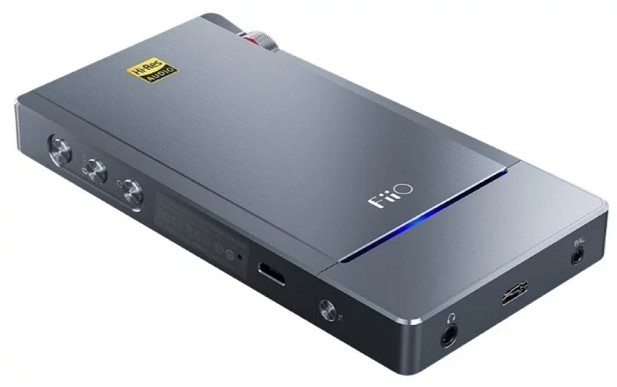
| FiiO Q5 | |
|---|---|
| Channels, number | 2 |
| Frontal channels. Power, W | 0,47/0,23 |
| Playback frequency 3.5 output. Range, Hz | 5:50000 |
| Balanced output playback frequencies. Range, Hz | 5:50000 |
| DAC | AK 4490EN * 2 |
| Bluetooth | CSR8670 |
| Accumulator, built-in, mA / h | 3800 |
| Weight, kg | 0.2 |
| T (time) of work from one charge, hour | 25 |
- the presence of 2 outputs, including a balanced one;
- availability of optical, coaxial and line inputs, plus USB;
- the set includes rings, a silicone gasket for separation, an iOS connection cable, a cable for connecting to a PC and charging, adapters, an analog wire;
- mobile and portable amplifier with low quality "drawdown";
- full battery charge is 3.2 hours;
- stable communication without interference in the wireless interface;
- the presence of an indicator strip between the amplifier unit and the main body, informing about the charge level and active input;
- switches for gains and "lows";
- the power button is "surrounded" by a red corporate ring;
- tight volume control with a smooth, silent circuit, without channel imbalance;
- a three-dimensional scene with ideal nuances in the middle frequencies and deep "lows", without excessive mass, "high" is moderate;
- large headroom for a wide range of headphones.
- no charging indication without Bluetooth connection;
- not all high-impedance headphones pump.
Shanling UP2

An amplification device with Bluetooth and DAC from a Chinese manufacturer is a popular model in the budget class.
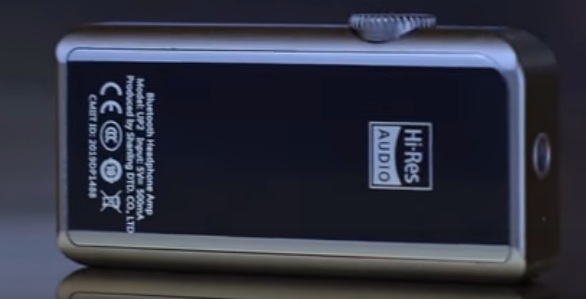
| Shanling UP2 | |
|---|---|
| Channels, number | 2 |
| Signal to noise ratio, dB | 116 |
| DAC | + |
| Bluetooth | + |
| Bitness, depth, Bit | 24 |
| Weight, kg | 0.26 |
| Output power, mW / ohm-W | 67/32 |
- support for all popular codecs;
- Hi-Res-Audio format is provided by Qualcomm CSR8675 chip with stable long distance connection and minimal latency;
- the case LED informs about the active codec;
- decent stage width;
- convenient location of USB and mini-jack connectors at different ends of the case;
- digital signal transmission to DAC ES921P with conversion to analog at low distortion and signal-to-noise ratio of 116 dB;
- Knowles SiSonic microphone, version 8.0 cVc noise suppression;
- the multifunction wheel has full control;
- the volume control has 64 steps;
- the ability through the wheel to answer calls and control playback;
- standby mode 200 hours, autonomous operation 10 hours from UP2 battery;
- stylish design, sophisticated shape;
- PC compatibility for stand alone DAC mode;
- full charge period 120 minutes;
- buying on Aliexpress.
- no oleophobic coating;
- plastic clip.
Sony PHA-2A

Portable stereo device with built-in DAC and support for popular formats produces very high quality and clear sound.

| Sony PHA-2A | |
|---|---|
| Channels, number | 2 |
| Headphones, impedance, Ohm | 8:600 |
| DAC | ESS Saber ES9018S |
| Sampling, frequency, kHz | 384 |
| Frequencies, range, Hz | 10:100000 |
| IOS mode KHz / bit | 48/24 |
| KHz / bit optical input mode | 192/24 |
| Weight, kg | 0.23 |
| Output power, mW / Ohm-W | 100/32 |
| Output power - balanced, mW / Ohm-W | 320/32 |
- high output power;
- balanced output;
- high-quality construction of the stage in width and length;
- quality of high frequencies and mids, bass is elastic;
- the presence of two modes of amplification;
- with software sound amplification by means of a switch;
- the volume is conveniently adjusted by the rotation knob and is protected by cabinet magnification;
- stylish techno design;
- high quality assembly;
- DSEE HX system from the manufacturer for listening in high quality MP3 format.
- high price;
- standard balanced cables are not suitable due to connectors, additional purchase is required;
- charging is performed only in shutdown mode.
OPPO HA-2

The stereo sound portable amplifier has a USB connection to a PC.
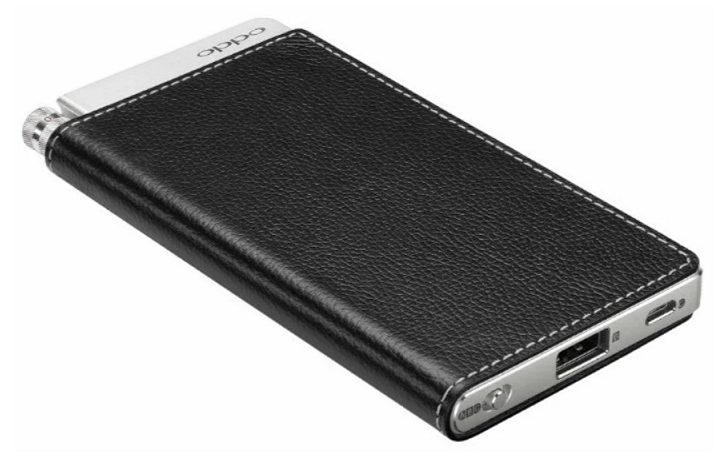
| OPPO HA-2 | |
|---|---|
| Channels, number | 2 |
| Connector, mm | 3.5 |
| DAC | + |
| Frequencies, range, Hz | 20:200000 |
| Racks | USB, Micro-USB |
| Power, mW / Ohm | 300/16; 220/32; 30/300 |
| Weight, kg | 0.175 |
- beautiful design with black leather and contrasting stitching;
- sound quality with good clarity and detail;
- the ability to connect various sources;
- full charge takes less than 60 minutes;
- with battery discharge indication.
- the upper range is not “colored” enough.
Stationary amplifiers
Sennheiser GSX 1000

Stereo amplifier on a semiconductor circuit for a PC has good sound and wide functionality, perfect for computer games.
| Sennheiser GSX 1000 | |
|---|---|
| Channels, number | 2 |
| Headphones, max impedance, Ohm | 150 |
| Headphones, min impedance, Ohm | 16 |
| Control Panel | sensor |
| Headphone output, quantity | 1 |
| Weight, kg | 0.39 |
| Output power, mW | 1000 |
- round touch panel for adjusting parameters;
- the ability to record settings;
- presence of a sensor backlight, goes out after the end of the settings;
- the volume sensor is active in constant mode;
- black strict design;
- tilt positioning of the body is possible using the built-in stand;
- presence of microphone, USB - inputs, outputs for headphones and speakers;
- materials of manufacture - aluminum and high-quality plastic.
- the limit of possibilities is 150 Ohm.
FiiO Olympus 2-E10K
Small-sized stereo amplifier from the Chinese manufacturer - the flagship of the budget group.

| FiiO Olympus 2-E10K | |
|---|---|
| Channels, number | 2 |
| Frequency range, kHz | 20:20000 |
| Voltage, corridor, V | 7.39 |
| DAC model | Texas Instruments PCM 5102 |
| Signal-to-noise ratio, dB | 105 |
| Headphone outputs, mm | 3.5 + coaxial + linear |
| Weight, kg | 0.78 |
- perfect price-quality ratio;
- the presence of a switch with high and low gain Gain;
- Suitable for frequent transfer and connection to a mobile device. With an agreed high level of energy consumption;
- with built-in power supply;
- the presence of the bass enhancement function.
- not suitable for high-ohm models, since there is no 6.3 mm connector;
- the Hi Fi quality is not achieved.
S.M.S.L M3
A stationary stereo sounding device with a built-in DAC, high quality and at an affordable price has a lot of positive reviews.

| S.M.S.L M3 | |
|---|---|
| Channels, number | 2 |
| Connector, mm | 6.3 |
| DAC | + |
| Signal-to-noise ratio, dB | more than 120 |
| Discrediting, frequency, USB, kHz | 32/384 |
| Discrediting, frequency, coaxial, optical, kHz | 32/192 |
| Weight, kg | 0.6 |

- works in USB-DAC mode;
- Hi-Fi class converter;
- small size and discreet design;
- high-quality and durable assembly of aluminum construction;
- TRS connector, there is a 3.5 mm adapter;
- affordable price.
- there is no gain (coefficient);
- weak headphones run the risk of going to maximum volume without "nano" settings.

Despite the abundance of amplifying devices, their manufacturers, price and functional lines, you can find a lot of examples of the wrong choice on the Internet. Hopes for quality, volume, power, playback control are not justified. It is the abundance of offers and insufficient technical training of the user that sometimes leads to waste. In the case of choosing a headphone amplifier, the proverb becomes especially important: "Measure seven times ..."
new entries
Categories
Useful
Popular articles
-

Top rating of the best and inexpensive scooters up to 50 cubic meters in 2024
Views: 97661 -

Rating of the best materials for noise insulation for an apartment in 2024
Views: 95022 -

Rating of cheap analogues of expensive drugs for flu and colds for 2024
Views: 91751 -

The best men's running shoes in 2024
Views: 87681 -

Top ranking of the best smartwatches 2024 - price-quality
Views: 85091 -

Best Complex Vitamins in 2024
Views: 84801 -

The best dye for gray hair - 2024 top ranking
Views: 82406 -

Rating of the best wood paints for interior use in 2024
Views: 77202 -

Ranking of the best action cameras from China in 2024
Views: 75269 -

Rating of the best spinning reels in 2024
Views: 74827 -

The most effective calcium supplements for adults and children in 2024
Views: 72463 -

Top rating of the best means for male potency in 2024 with a description
Views: 68296


